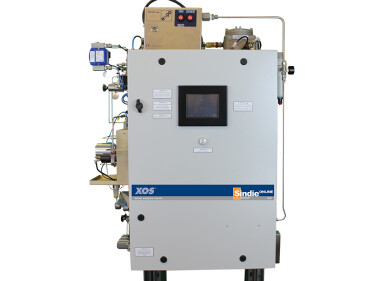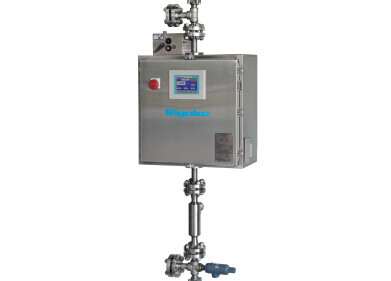Sulphur analysis
The Mini Gas Splitter Improves Analytical Accuracy in Trace Sulphur Analysis
Mar 21 2018
SCION Instruments, a global leader in Gas Chromatography, is pleased to announce the launch of the new Mini Gas Splitter. This new tool improves analytical accuracy in trace sulphur analysis by capillary gas chromatography.
The importance of sulphur removal from various (energy) sources can be beneficial for many reasons; such as the toxicity, corrosion and environmental pollution that will be caused by sulphur containing components if they remain in the energy source.
Before crude oils are distilled in refineries or before coal is converted for the use of fuels, the sulphur is first removed from the raw feed streams. H2S, and to a lesser degree organic sulphur, is formed during these conversions and treating steps. When natural gas is extracted from their sources the gas is treated in gas treating plants before use as an energy source. The H2S, COS and other organic sulphur in the gas are removed from the raw materials.
Handling gaseous streams contaminated with low levels of sulphur species requires special attention, mainly because of the reactive nature of the components; they tend to be adsorbed onto most materials. The analytical effect is more drastic at lower concentration levels. Attention needs to be given to the transport of the gas, sampling into specially treated containers, transfer into and transport through the analytical device, i.e. the gas chromatograph.
Once inside the gas chromatograph the sample may experience a number of locations where potentially irreversible adsorption may take place before it reaches the detector. The detector is where the concentration is determined; so, losses in the sample pathway prior to the detector will not be witnessed, leading to errors in the final reported result.
At SCION Instruments we take great care in designing such analytical solutions. By making use of inert material, deactivated steel transfer tubes, and fused silica separation columns, we reduce all adsorption sites in the sample flow. This combined with avoiding large volumes in the sample path, allow SCION to deliver the highest level of sample transfer to the detector. The detector used by SCION is the sulphur specific Pulsed Flame Photometric Detector, PFPD, operated in S-mode. This detector shows high Sulphur specific response with almost infinite Sulphur/Carbon selectivity.
The Mini Gas Splitter, a SCION special tool, is used to handle the sample en route to a capillary column, once it has passed via a large sample loop and valve. The reason for the loop being large is to allow for sufficient sample sensitivity for trace analysis. If the loop and valve were stainless steel they would adsorb sulphur, but because the injection valve and loop are produced out of inert Hastelloy-C, no sample adsorption takes place during the injection process. The Mini Gas Splitter serves as the alternative for a standard injector. The advantage; its small size and use of deactivated material. The use of the EFC type 25, guarantees optimal splitting characteristics as you would expect from a standard injector.
Digital Edition
PIN 26.1 Feb/Mar 2025
March 2025
Analytical Instrumentation - Elemental Analysis for Quality and Process Control at Refineries, for Lubricants and Wear Metals in Engine Oils - Synthetic Lubricants: New Developments - Scaling...
View all digital editions
Events
Apr 08 2025 Birmingham, UK
Apr 08 2025 Kielce, Poland
Apr 08 2025 Ravenna, Italy
Apr 08 2025 Southampton, UK
Apr 08 2025 London, UK
.jpg)


















